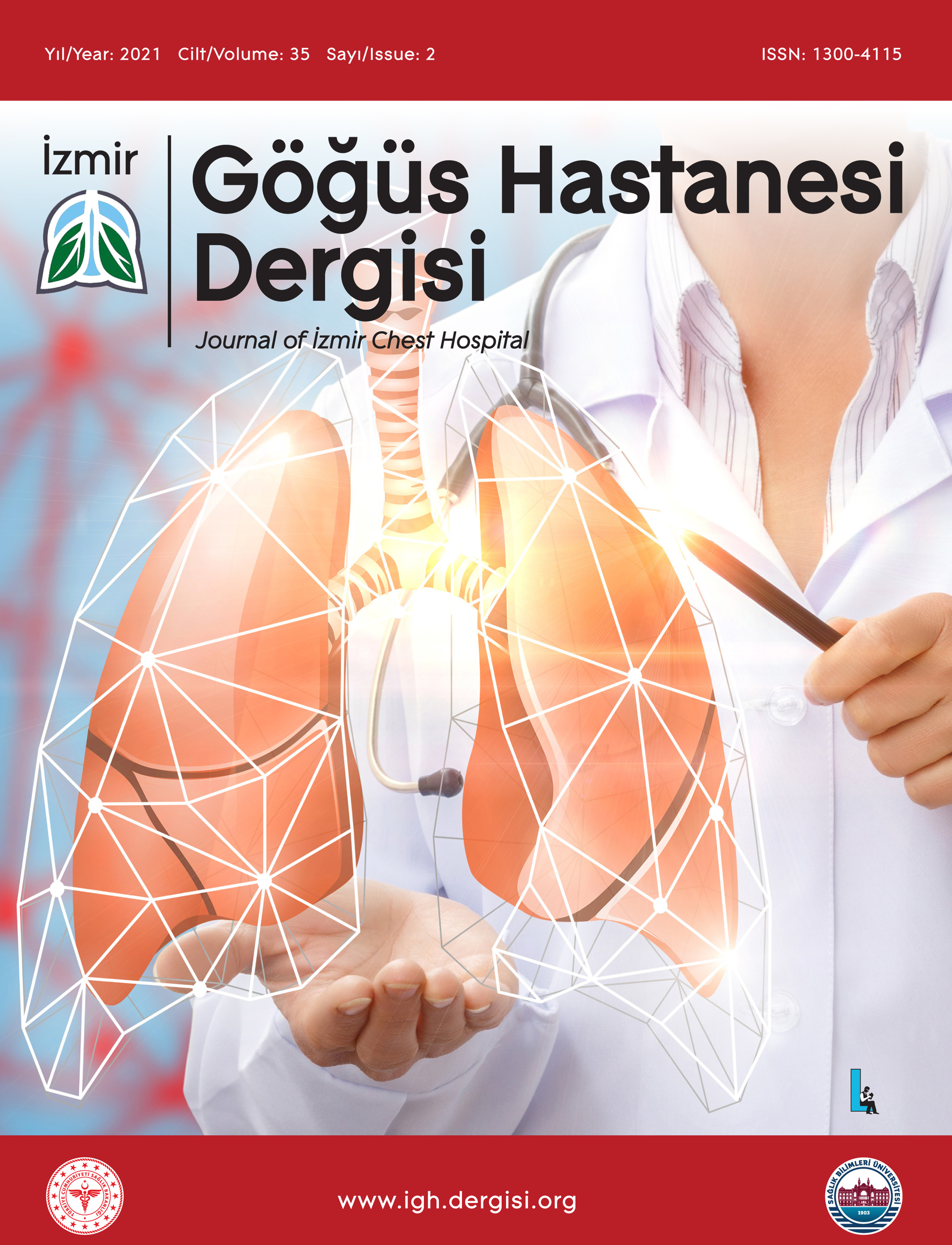TİOTROPİUM KULLANAN KOAHLILARIN KOMORBİDİTELERİ
Edhem ÜNVER1, Handan AKSOY1, Sedat ALTIN2, Saim KERMAN31Erzincan Üniversitesi, GÖĞÜS HASTALIKLARI, ERZİNCAN, Türkiye2Sağlık Bilimleri Üniversitesi, GÖĞÜS HASTALIKLARI, İSTANBUL, Türkiye
3Sağlık Bakanlığı, ANKARA, Türkiye
Amaç: KOAH multisistemik bir hastalıktır ve komorbid hastalıkların varlığı KOAH morbiditesini etkilemektedir. Bu çalışmada amacımız tiotropium kullanan KOAH hastalarında komorbidite sıklığını belirlemektir. Materyal ve Metod: 2013 yılında Türkiyede Reçete Bilgi Sisteminden alınan verileri kullanılarak ICD-10 tanı kodlama sistemine göre reçetede bulunan tanılar kaydedildi. Bulgular: Tiotropium reçetelenmiş 877.040 reçetede toplam 1.957.223 tanı olduğu saptandı. Başlıca komorbiditeler %24,2 oranı ile kardiyovasküler hastalıklar, %16,9 ile gastrointestinal sistem hastalıkları, %12,7 ile kas-iskelet sistem hastalıkları, %9,4 ile endokrinolojik hastalıklar ve %6,4 diğer semptomlar olarak belirlendi.KOAH ile birlikte ilaç reçetelenen hastaların %16,2sında hipertansiyon, % 8,9unda Gastroözofajial reflü hastalığı (GERH), %5,4ünde miyalji, %4,6sında diyabet, % 4ünde aterosklerotik kardiyovasküler hastalık, %3,6sında peptik ülser, öne çıkan tanılar olarak dikkati çekmektedir. Sonuç: KOAH ülkemizde komorbiditeleri yoluyla direkt ve dolaylı olarak ekonomik maliyeti giderek artan bir sağlık sorunudur. Sorunların çözülebilmesi için ulusal tıbbi kayıt sistemleri kullanılarak yapılan epidemiyolojik çalışmalara ihtiyaç vardır.
Anahtar Kelimeler: KOAH, komorbiditeler, tiotropiumCO-MORBIDITIES OF PATIENTS WITH COPD USING TIOTROPIUM
Edhem ÜNVER1, Handan AKSOY1, Sedat ALTIN2, Saim KERMAN31Erzincan Üniversitesi, GÖĞÜS HASTALIKLARI, ERZİNCAN, Türkiye2Sağlık Bilimleri Üniversitesi, GÖĞÜS HASTALIKLARI, İSTANBUL, Türkiye
3Sağlık Bakanlığı, ANKARA, Türkiye
Aim: COPD is a multisystemic disease and the morbidity from COPD may be affected by other comorbid chronic conditions. The aim of our study was to assess the frequency of comorbidities in COPD patients taking tiotropium. Material and methods: According to the 2013 Turkey Recipe Information Systems data, prescriptions included Tiotropium were selected and identified recorded other diagnoses together with COPD focusing on ICD-10-codes. Results: A number of total prescription was 877.040 and a number of total diagnosis was 1.957.223. Main comorbidities were determined as cardiovascular disease with 24,2%, gastrointestinal system disorder with 16,9%, musculoskeletal impairments with 12,7%, endocrinological diseases with 9,4%, other symptoms with 6,4%. As prominent diagnoses of patients prescribed medication with COPD, were hypertension in 16,2% gastroesophageal reflux disease (GERD) in 8,9%, myalgia in 5,4%, diabetes in 4,6%, atherosclerotic cardiovascular disease in 4%, and peptic ulcer in 3,6%. Conclusion: COPD is speculated as a health burden having both direct and indirect costs via comorbidities in our country. The economic impact of COPD is only going to worsen. It is necessary to conduct epidemiologic studies performed using national medical record data to improve overall outcomes.
Keywords: COPD, comorbidity, tiotropiumMakale Dili: Türkçe






